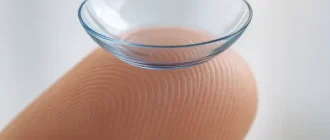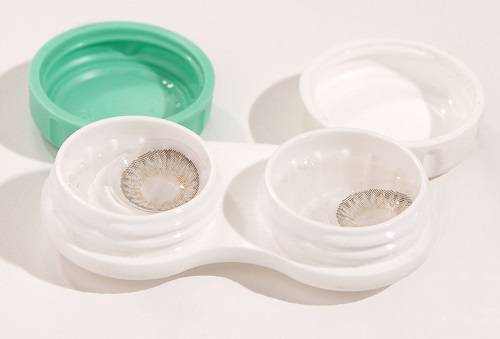Eye health is an area of growing concern, particularly as modern lifestyles lead to increased screen time, aging populations, and other factors that put our vision at risk. But beyond the typical recommendations like wearing sunglasses and taking breaks from your devices, there’s a lot of buzz around two specific nutrients: lutein and zeaxanthin. Let’s explore why these carotenoids have become the center of attention for those looking to keep their eyes healthy well into old age.

What Are Lutein and Zeaxanthin, Exactly?
Lutein and zeaxanthin are carotenoids, which are types of plant pigments found in various fruits and vegetables. These carotenoids are particularly important because they are highly concentrated in the retina, especially in the macula—the area responsible for central vision. They act as a natural sunblock for your eyes, filtering out harmful blue light and reducing oxidative stress.
Fun Fact: The body cannot produce lutein or zeaxanthin on its own. You must get them through your diet or supplements. The highest natural sources are leafy greens like spinach and kale, but they’re also present in eggs, corn, and even pistachios.
Statistical Insight: Who Benefits the Most?
Studies show that about 25 million people worldwide are affected by age-related macular degeneration (AMD), and this number is expected to double by 2050. AMD is one of the leading causes of vision loss, especially in older adults, and lutein and zeaxanthin have shown promise in slowing down its progression.
A large-scale study, AREDS2 (Age-Related Eye Disease Study 2), found that individuals who took supplements containing lutein and zeaxanthin had a 10-25% reduced risk of developing advanced AMD compared to those who didn’t. While that might not sound like a huge number, for millions of people, even a slight reduction in risk can mean the difference between independence and severe vision loss.
| Population Group | Risk Reduction with Lutein/Zeaxanthin Supplements |
|---|---|
| Older Adults (60+) | 25% less likely to develop advanced AMD |
| High Blue Light Exposure | 20% reported less eye strain |
| People with Low Dietary Intake | 15% improvement in visual acuity |
How Do These Carotenoids Work?
Lutein and zeaxanthin work by absorbing harmful blue light that enters the eyes. Blue light exposure comes from many sources: the sun, computer screens, LED lights, and phones. By reducing the amount of blue light that reaches the retina, these carotenoids help prevent phototoxicity. Dr. Rebecca Smith, an ophthalmologist, explains, “Think of lutein and zeaxanthin as a pair of natural sunglasses that you wear inside your eyes. They filter out potentially harmful rays and minimize oxidative damage.”
Current Trends: Supplements vs. Natural Sources
The market for eye health supplements is booming, with global sales of lutein and zeaxanthin supplements expected to reach $600 million by 2025. But are pills the best way to get these nutrients? While supplements are convenient, many experts, including Dr. Eric Johnson, advocate for getting lutein and zeaxanthin primarily through food.
Why food first? Absorption is key. Lutein and zeaxanthin are fat-soluble, meaning they’re better absorbed when consumed with some dietary fat. So, pairing leafy greens with a bit of olive oil can enhance their effectiveness. A spinach salad with a drizzle of oil, for example, may give your eyes more benefit than a capsule.
Top Foods Rich in Lutein and Zeaxanthin:
- Kale (1 cup cooked): 23.8 mg
- Spinach (1 cup cooked): 20.4 mg
- Egg Yolks (2 large): 0.3 mg
- Corn (1 cup cooked): 1.5 mg
Many people, however, struggle to get enough of these nutrients through diet alone. The average American diet contains less than 2 mg of lutein and zeaxanthin daily, well below the recommended 6-10 mg for eye health benefits. That’s where supplements come into play, offering a simple way to fill in the nutritional gaps.
Real Life Application: Who Needs Them the Most?
Older Adults: As we age, our ability to fight oxidative stress diminishes, making it crucial to maintain a diet rich in antioxidants. A 2021 study from the Journal of Nutrition and Aging found that adults over 65 who consumed at least 10 mg of lutein daily scored higher on visual acuity tests.
High Screen Users: Spending hours in front of screens is now unavoidable for most of us. Digital eye strain—characterized by symptoms like dryness, irritation, and blurred vision—is on the rise, and lutein and zeaxanthin have shown potential in reducing these effects. A 2020 survey found that individuals taking lutein and zeaxanthin reported 20% less eye fatigue compared to those who didn’t.
People with a Poor Diet: If your diet consists mostly of processed foods, you are likely missing out on essential nutrients. Adding lutein-rich vegetables or a supplement may help protect your eyes from further damage.
How Much Do They Cost?
The cost of lutein and zeaxanthin supplements varies widely depending on the brand and dosage. On average, a month’s supply can range from $15 to $30. While it may seem like a small expense, consider that supplements are meant to complement a healthy diet, not replace it. For those trying to budget, incorporating more lutein-rich foods might be a more cost-effective approach.
Editorial Team’s Advice for Clearer Vision
The importance of lutein and zeaxanthin for eye health cannot be understated. With screen time and blue light exposure at an all-time high, our eyes need all the help they can get. Our best advice? Start with your diet. Incorporate leafy greens, colorful vegetables, and eggs into your meals regularly. If you find it challenging to meet your needs through food alone, consider a supplement—especially if you’re over 60 or spend a significant part of your day in front of screens.
Healthy vision is a lifelong journey, and taking small, actionable steps today can mean sharper, clearer sight tomorrow. As Dr. Smith aptly puts it, “Your eyes are an investment, not an expense. Treat them well.”





